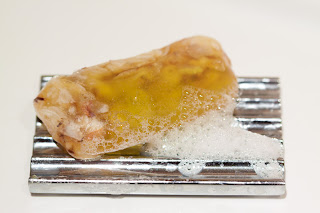When photographers use artificial light in photography, the effect of the lighting depends on the type of bulb used. The warm dispersed glow of incandescent light produces an effect that is dramatically different from that produced by the sharp, narrow, focused beam of a street light.
Photographs taken with incandescent light often have a yellow tinge. A photographer can combat this tint in two ways. One method is to use a blue filter to offset the excessive yellowing. If you’re using a film camera instead of a digital one, you can use tungsten film that is designed for professional studio lights. Although it wasn’t intentionally designed with incandescent light in mind, tungsten film reduces the yellow tones so often found in indoor color photography.
Florescent lights produce a diffuse light that often translates into greenish tinges in color photography. Using a fluorescent or daytime filter helps remove this unappealing color.” (Source: www.photography.com/articles/basic-concepts/color-and-light/).
“A special type of incandescent lamp is the tungsten halogen lamp, in which a halogen is added to the filling gas, the gas is under high pressure and is contained within a small strengthened glass bulb.” (Source: www.ted.photographer.org.uk/photoscience_lighting.htm). This gives daylight balanced lighting (although it can sometimes have a blue tint).
The pictures on my blog of 14 Nov 09 demonstrate these different types of light. However, I wanted to demonstrate the different types of light by taking some images on location, capturing everyday life rather than staged shots. The results are shown below:
1. Incandescent lighting
These pictures are of my parents having their Christmas dinner. Due to my dad’s poor health they have just moved into a small bungalow with old fashioned but, thankfully, quite neutral decor. It was a bit of a squeeze in the small dining room which made it hard to find a suitable angle to take the photographs in order to capture the whole scene. In fact, it would have been easier to stage something in a larger room but after looking at the work of photographers such as Nick Waplington and Richard Billington in our art history classes I wanted to try out some ‘real life’ photography. It was also something of a challenge for me as I hardly ever take photographs with people in them and I thought these images might come out rather sad and unsympathetic but I think they are actually the opposite.
I have set out the images showing the original unedited versions which clearly have a yellow cast from the incandescent light followed by edited versions where I have adjusted the white balance to produce a more natural colour.
My first thought was to take some pictures at the local bus station but I found that, since it has been modernised, it no longer has flourescent lighting, nor does the train station I tried. Lots of shops still have fluorescent lighting but I knew I’d need to get permission from the store manager before I could set up and start taking pictures in a shop. I ended up at the stables where my horse Billy lives and where there is fluorescent lighting in the office and the lecture room. There were no events taking place this day so I had to stage some shots of someone at work (modelled by Ian my husband). You can see a greenish tinge on these pictures which I have then colour corrected.
And I just had to put in a picture of Billy (in natural daylight!).
3. Halogen lightingOkay so as a a self-portrait this is staged, but it does reflect an everyday event - I never knew I looked so serious when putting my mascara on! As Halogen lighting is daylight balanced this shot didn’t need any editing.
I thought the lighting in my bathroom was really good and that the white sink unit would provide a good high key background for some product shots, so I had a play with my new macro lens to take some shots of everyday stuff in my bathroom. I think the lighting is very effective.























































